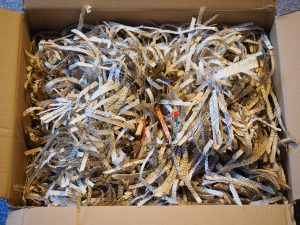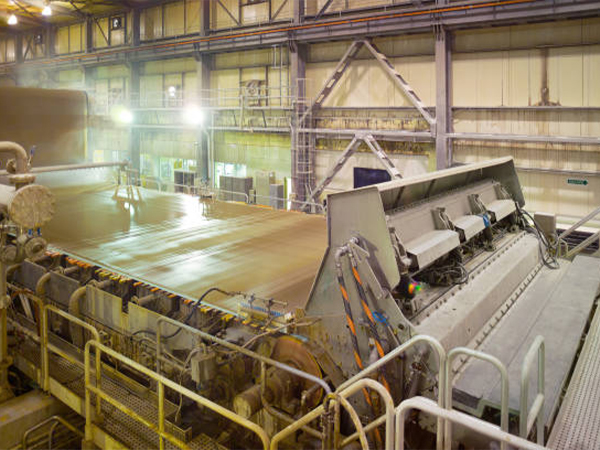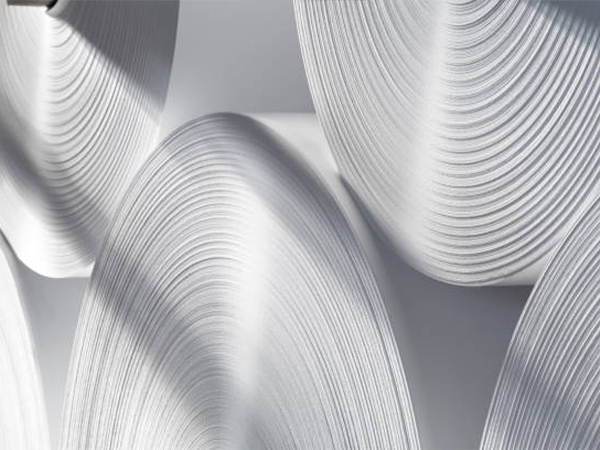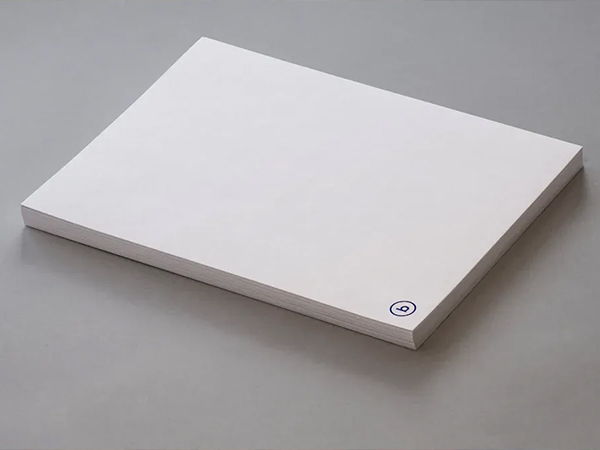
You achieve greater efficiency in high-filler paper systems when you use Polyacrylamide Retention Aids. These aids help you capture more filler and fines during the papermaking process.
- The combination of cationic polyacrylamide with bentonite increases the retention yield of calcium carbonate, often pushing retention values above 90%.
| Benefit Type | Description |
|---|---|
| Reduced Material Loss | Improved retention rate of fine fibers and fillers, leading to lower raw material consumption. |
| Improved Paper Strength | Enhanced tensile strength and strain at break, with reductions of up to 36% for breaking length and 51% for strain compared to reference samples. |
| Economic Viability | Direct savings in production costs due to reduced raw material losses. |
You optimize both product quality and cost efficiency when you improve filler retention. Better drainage and reduced environmental impact follow, making your operation more sustainable.
Key Takeaways
- Polyacrylamide Retention Aids significantly improve filler retention, increasing rates from 50-60% to 75-85%, which reduces material loss and enhances paper quality.
- Using these aids boosts drainage efficiency, allowing machines to operate faster and consume less energy, leading to cost savings and a more sustainable operation.
- Optimizing filler usage with Polyacrylamide Retention Aids lowers raw material consumption while maintaining or improving paper quality, directly impacting production costs.
- Conducting laboratory tests before full-scale implementation helps determine the best dosage and addition sequence for optimal results in your papermaking process.
Introduction: The Importance of Filler Retention

Why high-filler systems are widely used
You see high-filler paper systems in many mills because they deliver clear economic and quality advantages. Fillers replace more expensive fibers, which helps you control production costs.
- The cost of bleached chemical fiber is five to seven times higher than that of fillers.
- Even recycled and deinked pulp costs more than twice as much as common fillers.
- This price difference encourages you to maximize filler content.
Fillers also improve the optical and surface properties of paper. You achieve higher opacity and brightness, which are essential for printing and writing grades. Enhanced surface smoothness and uniform ink receptivity make your paper more attractive to end users.
When you optimize filler levels, you balance cost savings with product quality, making your operation more competitive.
Common challenges with filler loss
You face several challenges when working with high-filler systems. Fillers have a fine size and spherical shape, which makes them prone to loss through the forming fabric. Low retention rates mean you lose valuable materials, which impacts both cost and product quality.
- Poor retention performance leads to loss of fibers and fillers.
- The mechanical strength of your paper decreases because fillers disrupt fiber-fiber bonding.
- You may see increased chemical costs due to inefficiencies.
- Deposit-related problems can affect your machinery and slow down production.
You need effective solutions to address these issues. Polyacrylamide Retention Aids help you capture more fillers and fines, improving retention rates and reducing material loss.
By enhancing chemical retention, you strengthen your paper, increase machine speed, and lower energy consumption. You also reduce the need for additional sizing and wet-end additives, which cuts operational costs.
When you focus on optimizing filler retention, you improve drainage, printability, and the overall performance of your paper machine. You produce stronger, more uniform paper and make your process more sustainable.
What Is Polyacrylamide?
Overview of PAM as a retention aid
You rely on polyacrylamide as a powerful retention aid in papermaking. This synthetic polymer consists of repeating acrylamide units. Manufacturers often modify it with cationic functional groups, which give the molecule a positive charge. This charge allows polyacrylamide to interact efficiently with the negatively charged surfaces found in pulp slurries.
- Polyacrylamide forms complexes with fibers and fillers.
- You see significant increases in fines retention.
- The polymer works well with additives like aluminum sulfate and bentonite.
You benefit from polyacrylamide’s high molecular weight, which ranges from 200 to 400 million. This property sets it apart from other retention aids and boosts its effectiveness in high-filler systems.
| Characteristic | Polyacrylamide (PAM) | Other Retention Aids |
|---|---|---|
| Molecular Weight | 200 to 400 million | Varies |
| Charge Density | Anionic, Cationic, Amphoteric | Varies |
| Retention Mechanism | Forms complexes with fibers and fillers | Varies |
| Effect on Fines Retention | Significantly increases | Varies |
| Compatibility | Works with aluminum sulfate and bentonite | Varies |
You choose Polyacrylamide Retention Aids because they deliver reliable performance and compatibility across a range of papermaking conditions.
Mechanism of action in papermaking
You see polyacrylamide work at the molecular level by aggregating fine particles into larger flocs. The long-chain structure of the polymer enhances flocculation, which creates larger and more porous structures in the pulp mat. This process improves drainage and dewatering, which are critical for efficient papermaking.
Scientific studies show that polyacrylamide’s adsorption capacity depends on the effective adsorption area. The formation of blockages relates to the match between pore throat radius and molecular chain length. The stability of adsorption varies with the type of clay minerals present.
| Key Findings | Description |
|---|---|
| Adsorption Capacity | Determined by the effective adsorption area. |
| Blockage Formation | Depends on the correspondence between pore throat radius and molecular chain length. |
| Stability of Adsorption | Influenced by the type of clay minerals. |
| Mechanisms | Higher polymer concentrations improve adsorption capacity and stability. |
| Adsorption Type | Primarily occurs through monolayer adsorption, with multimolecular layer adsorption being secondary. |
You notice that the addition of certain materials, such as T-ZnOw, can further improve the elastic modulus and water retention capacity of the gel. This means you achieve better stability and water management in your papermaking process.
Polyacrylamide Retention Aids help you aggregate fillers and fibers, leading to stronger paper and more efficient production. You gain better control over retention, drainage, and overall machine performance.
Key Benefits of Using Polyacrylamide Retention Aids
Improved filler and fines retention
You gain a significant advantage in filler and fines retention when you use Polyacrylamide Retention Aids. These aids help you capture more valuable materials in the sheet, reducing waste and improving paper quality.
- Filler retention rates increase from 50–60% to 75–85% with polyacrylamide use.
- Polyacrylamide hydrogels with patterned structures achieve a retention efficiency of about 97%.
- Non-patterned hydrogels only reach 70% retention after repeated drying and rehydration cycles.
- Patterned hydrogels also hold water about 35% longer than non-patterned versions after 100 hours of drying.
You see these improvements directly in your production output. Higher retention means less loss of expensive fillers and fines, which leads to better sheet formation and more consistent product quality.
Better drainage and machine efficiency
Polyacrylamide Retention Aids do more than just improve retention. They also enhance drainage and boost your machine’s efficiency. When you add cationic polyacrylamide, you neutralize negative charges in the pulp slurry. This action forms larger, more permeable flocs, which allow water to escape faster during pressing and drying.
| PAM Dosage | Soil Infiltration Rate | Soil Water Retention | Saturated Water Content | Hydraulic Conductivity |
|---|---|---|---|---|
| 0.00% | High | Low | Low | High |
| 0.02% | Moderate | Moderate | Moderate | Moderate |
| 0.04% | Low | High | Highest | Lowest |
| 0.06% | Moderate | Moderate | Moderate | Moderate |
You benefit from faster water removal, which lets your machines run at higher speeds. Improved drainage also reduces energy consumption, making your operation more cost-effective and sustainable.
Efficient drainage directly impacts your production speed and energy use. Polyacrylamide Retention Aids help you achieve both higher output and lower costs.
Cost savings through optimized filler usage
You save money when you optimize filler usage with Polyacrylamide Retention Aids. These aids help you retain more fibers and fillers, so you use less raw material to achieve the same or even better paper quality.
- You lower raw material consumption by enhancing retention of fibers and fillers.
- You can maintain or improve paper quality with reduced amounts of pulp and filler, which cuts costs.
- You reduce suspended solids in wastewater, leading to lower treatment costs and less energy use.
By improving retention and drainage, you streamline your process and reduce waste. This approach supports both your bottom line and your sustainability goals.
Applications in High-Filler Paper Systems

Printing and writing papers
You rely on high-filler systems to produce printing and writing papers with excellent brightness and opacity. Polyacrylamide Retention Aids help you achieve consistent quality and efficient production.
- You improve fiber and chemical retention, which prevents the loss of valuable materials during manufacturing.
- You use these aids as flocculants to aggregate fine particles into larger flocs, making it easier to retain them in the sheet.
- You enhance paper quality by stabilizing the dispersion of particles, which leads to uniform formation and better dewatering.
- You reduce production costs because you need fewer chemicals and fibers to reach your quality targets.
- You apply these aids across a range of paper types, including writing, printing, newsprint, and boxboard.
You also see performance improvements such as increased filler retention and enhanced drainage. With optimal dosage, you raise filler retention percentages from 47.5% to 71.1%. You use fewer wet end additives and sizings, which lowers costs. You notice better surface contact, reduced steam usage, and fewer sheet breakages. Your machine runs more smoothly, and you produce higher quality paper with increased brightness. Cleaner white water systems and optimized drying energy further boost your productivity.
Packaging and board grades
You manufacture packaging and board grades that require strength and printability. Polyacrylamide Retention Aids act as flocculants and bridging agents, adsorbing onto fine particles and neutralizing their charges. You promote aggregation into larger flocs, which improves retention of fines and fillers. This process gives you a more uniform sheet with better printability and structural integrity. You tailor the molecular weight and charge density of the retention aid to optimize its effect for different packaging and board grades.
Specialty high-brightness papers
You produce specialty high-brightness papers that demand superior uniformity and strength. Polyacrylamide Retention Aids play a key role by enhancing the retention of fibers and fillers. You benefit from improved uniformity and strength in your final products. These aids stabilize your paper machine operation, helping you achieve higher brightness and better overall quality.
- You enhance retention of fibers and fillers.
- You improve uniformity and strength of your paper.
- You stabilize machine operation.
- You achieve higher brightness and better quality.
You gain reliable performance and consistent results when you use Polyacrylamide Retention Aids in high-filler paper systems. Your products meet demanding specifications, and your process runs efficiently.
Amazon Chemicals’ Polyacrylamide Solutions
Product portfolio for different mill needs
You find a wide range of solutions when you choose Amazon Chemicals for your mill. Their product portfolio covers the requirements of different paper grades and machine setups. You select from cationic, anionic, and amphoteric polyacrylamide formulations. Each type targets specific retention and drainage challenges. You match the molecular weight and charge density to your process for optimal results.
| Product Type | Application Area | Benefit |
|---|---|---|
| Cationic PAM | High-filler systems | Improved retention, drainage |
| Anionic PAM | Specialty papers | Enhanced brightness, uniformity |
| Amphoteric PAM | Board and packaging grades | Balanced strength, retention |
You receive tailored recommendations based on your mill’s needs. Amazon Chemicals helps you maximize the performance of Polyacrylamide Retention Aids in your operation.
Technical service and global support
You gain more than just chemicals when you work with Amazon Chemicals. Their technical service team supports you throughout your production process. You receive guidance on the correct use of chemicals, which helps you avoid common mistakes and improve efficiency.
- Amazon Chemicals provides technical support to clients.
- You get instructions on the proper application of retention aids.
- Their experts help you troubleshoot process issues.
- You access global support for consistent product quality.
You benefit from ongoing assistance, whether you operate a small mill or a large facility. Amazon Chemicals ensures you understand how to use their products for the best results. Their global network gives you reliable support wherever your mill is located.
Optimizing High-Filler Systems with Retention Aids
You can achieve optimal performance in high-filler paper systems by following proven strategies for retention aid application. Start by selecting the right combination of organic micropolymers and inorganic microparticles.
Tip: Always conduct laboratory testing before full-scale implementation. Testing helps you determine the most effective addition sequence and dosage for your specific process.
| Best Practice | Description |
|---|---|
| Laboratory Testing | Emphasizes the importance of testing to determine the most effective addition sequences and dosage levels for optimal results. |
| Identifying Suitable Systems | Focuses on selecting the correct retention and drainage aid system in conjunction with suitable addition points and dosage levels. |
You should also analyze the interaction between polyacrylamide and fillers. Particle size analysis reveals that composite formation depends on both filler size and polymer-filler interactions. When you use Polyacrylamide Retention Aids, you notice changes in the composition of your composites. Increased carbon, hydrogen, and nitrogen content signals successful polymerization. Surface morphology studies show that polyacrylamide-alumina composites develop new granulated structures, confirming effective filling and agglomeration.
| Evidence Description | Key Findings |
|---|---|
| Particle size analysis of polyacrylamide-filler composites | Different composite formation mechanisms were observed based on filler particle size and polymer-filler interactions. |
| Composition changes in composites | Increased carbon, hydrogen, and nitrogen content in composites compared to neat fillers indicates successful polymerization. |
| Surface morphology of composites | The surface of polyacrylamide-alumina composites showed significant changes, indicating successful granulation and filling by polyacrylamide. |
| Surface area comparison | Neat fillers had higher surface area than polyacrylamide-filler composites, confirming effective granulation during in situ polymerization. |
| Particle size growth over time | Continuous increase in particle size during the preparation of polyacrylamide-residual biomass composites indicates successful agglomeration. |
You improve your process by identifying the best addition points and adjusting dosage levels. These steps help you maximize retention, drainage, and sheet quality. When you optimize your system, you reduce material loss and enhance the sustainability of your operation.
You gain measurable advantages when you choose Polyacrylamide Retention Aids for high-filler paper systems. These aids boost retention, strengthen sheets, and improve drainage. Their high molecular weight and positive charge promote flocculation and charge neutralization, reducing waste and stabilizing operations.
| Application Area | Effect of Polyacrylamide |
|---|---|
| Filler & Pigment Retention | Reduces raw material loss and environmental load |
| Paper Strength | Improves fiber bonding and sheet durability |
| Dewatering Efficiency | Enhances drainage to lower drying energy |
To optimize your strategy, evaluate your current system and test new combinations of additives. You can increase efficiency, lower costs, and produce higher-quality paper by refining your approach.
FAQ
What is the main purpose of polyacrylamide retention aids in papermaking?
You use polyacrylamide retention aids to capture fillers and fines during sheet formation. This process improves retention rates, strengthens paper, and reduces material loss.
How do you determine the correct dosage of polyacrylamide?
You conduct laboratory tests to find the optimal dosage for your system. Start with small-scale trials, then adjust based on retention, drainage, and sheet quality results.
Tip: Always monitor machine performance after changing dosage levels.
Can polyacrylamide retention aids affect paper brightness?
Yes, you can maintain or even improve paper brightness with polyacrylamide retention aids. These aids help you retain more fillers, which contribute to higher opacity and brightness.
Are polyacrylamide retention aids environmentally friendly?
You reduce waste and lower chemical usage when you use polyacrylamide retention aids. These benefits help you minimize your environmental impact and support sustainable papermaking practices.
| Benefit | Environmental Impact |
|---|---|
| Reduced Waste | Less landfill |
| Lower Chemicals | Cleaner water |






